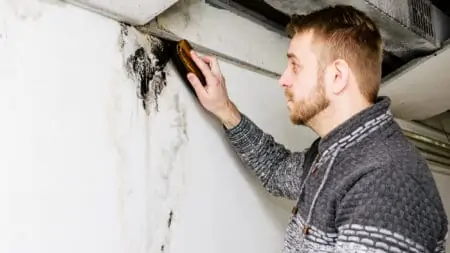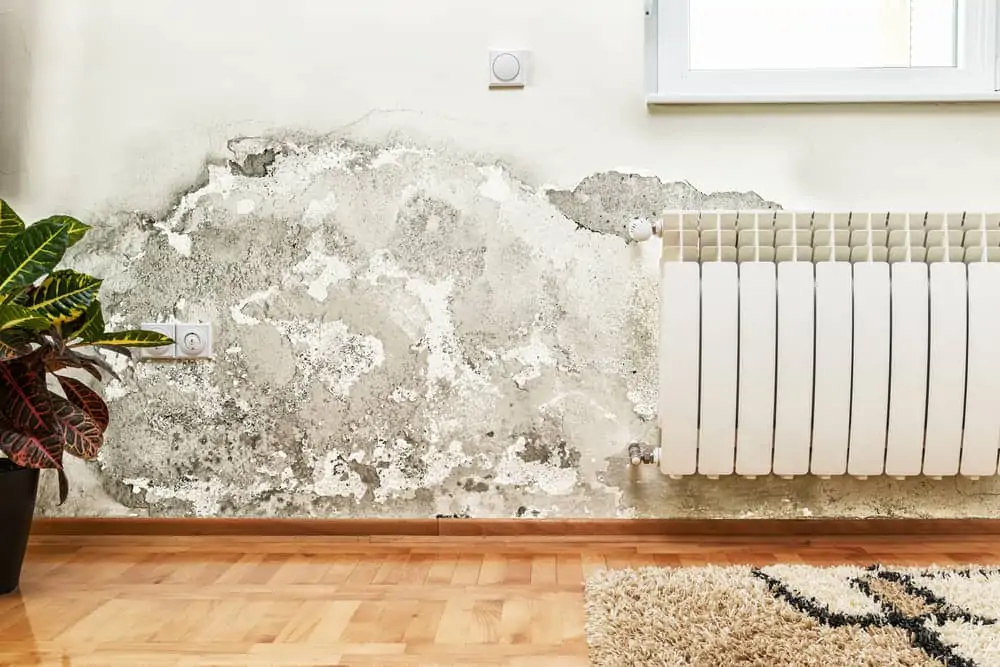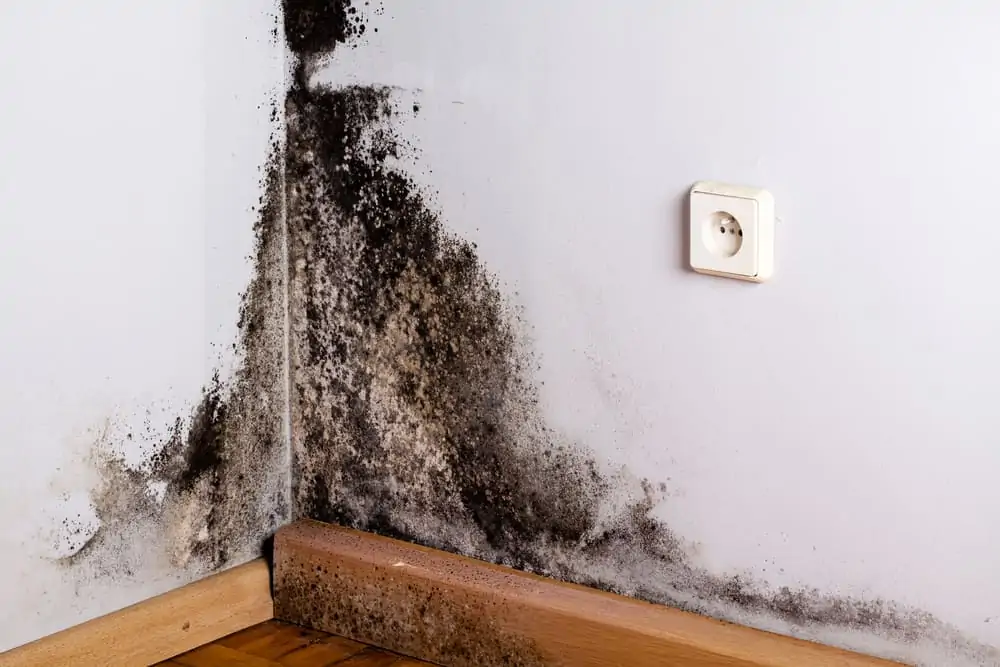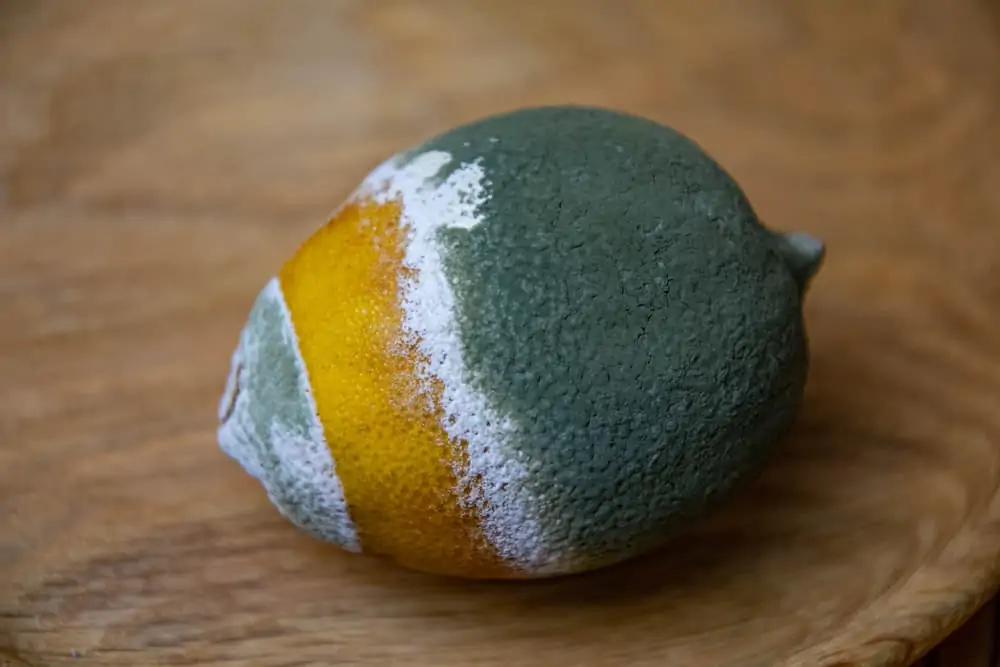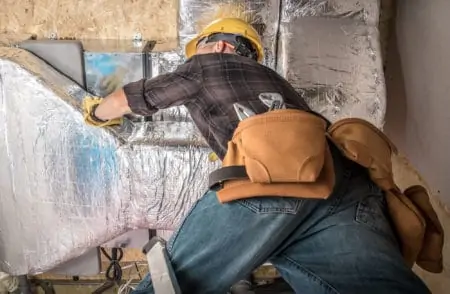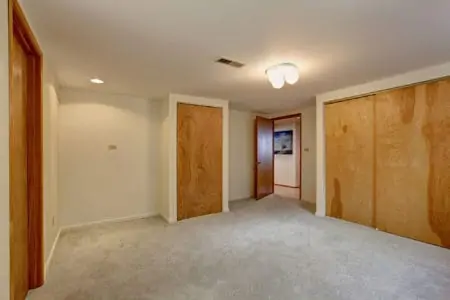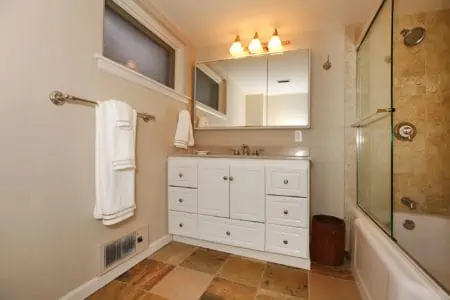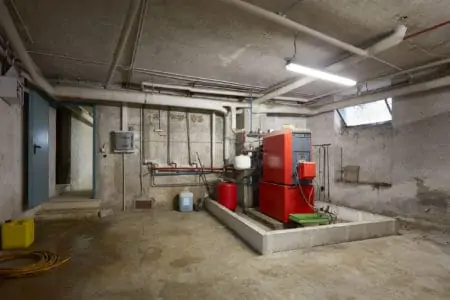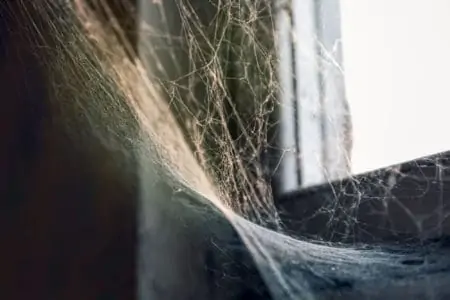Do you have unexplained nasal congestion or feel your allergy symptoms are getting out of hand? This could be due to the presence of mold on the premises. While mold is usually visible throughout the house, few people check the basement.
The basement is susceptible to mold growth as it’s often a dark and damp place. Learn how to get rid of mold in the basement with our comprehensive guide.
Key Takeaways
- Test the mold to determine the type and seek professional help if it’s black mold.
- Wear protective gear and ventilate the basement while cleaning.
- Use appropriate mold-killing solutions like undiluted white vinegar, baking soda, bleach, or Concrobium.
- Prevent mold growth by maintaining a clean, dry basement and fixing leaks promptly.
Is the Mold In My Basement Dangerous?
Before learning more about basement mold removal, it’s crucial to understand how dangerous mold can actually be.
Mold and mildew are types of fungi. Fungi aren’t plants nor animals, and around 100,000 species have been discovered globally. Mold is found in moist and humid environments, like wet basements, and is distinct from organic mold found in nature.
While both mold and mildew are fungi that release spores into the air, there is a distinction between the two. Mildew is typically grey or white in color, whereas mold is typically black, brown, green, or red, or a mixture of these hues.
Mold thrives in moist, humid settings and releases spores into the air, which can cause serious illness if ingested. This silent killer can irritate your eyes and respiratory system, and cause an odor problem in your basement.
Mold exposure can cause signs of an allergic reaction. It can exacerbate asthma attacks and cause serious complications in people with compromised immune systems. Mold will eventually damage the materials on which it grows.
Symptoms of Mold in Basement
The adverse consequences of short-term mold exposure vary by individual. If you have mold allergies or are just sensitive to it, you are more likely to experience severe symptoms.
Symptoms may vary but include the following:
- Headaches.
- Skin irritation.
- Nose bleeding.
- Sore throat.
- Sneezing/coughing.
- Red eyes.
- Nasal irritation.
- Wheezing.
- Blurry vision.
- Watery eyes.
- Sinus and nasal congestion.
In the long-term, mold exposure can lead to more severe problems, including organ damage, asthma, chronic sinusitis, or Legionnaires disease. Mold infections are uncommon, as they do not occur in healthy individuals.
However, if the immune system is compromised by drugs, diseases, nicotine, or alcohol, a person may become more susceptible to mold infections. Individuals with respiratory difficulties or a history of infection are more prone to infection.
Causes of Mold in Basement
Mold thrives in dark, moist, and warm environments. Mold cannot grow in areas with abundant sunshine. Combine this with oxygen, and you’ll have mold in approximately 24 to 48 hours.
Moisture mainly contributes to mold growth in basement regions, but it takes more than a little moisture to cause a mold infestation:
- Excessive moisture.
- Flooding.
- Condensation.
- Poor ventilation.
Basement Mold Types
Before deciding how to tackle the mold in your home, it’s important to identify what kind it is.
White Mold
White mold is most frequently discovered on expired foods in your refrigerator or pantry. It can also grow on a variety of water-soaked surfaces in your basement.
White mold is less likely to create mycotoxins. But it’s possible and can nevertheless have harmful health consequences such as allergic reactions and respiratory problems. If you discover white mold in your basement, it is most likely Cladosporium, Penicillium, or Aspergillus.
Black Mold
Black mold is one of the most prevalent molds in basements. It produces microscopic substances called mycotoxins as it grows, which are hazardous compounds that, if consumed, can cause adverse health effects.
If you discover black mold in your basement, it is almost certainly Stachybotrys chartarum. This mold species are known to produce mycotoxins, but not always. Mycotoxins are not found only in black mold; a wide variety of fungi produces them.
It is frequently discovered on basement carpets, walls, and wood frames. You should clear up black mold in your basement as soon as possible, either yourself or with a professional. Generally, this can be established by the severity of the issue.
Green Mold
As with white mold, numerous types of green mold can be found on decomposing food. However, if you discover green mold in your basement, it is almost certainly Cladosporium.
This mold species come in a variety of colors and readily spreads throughout your home’s air. Although mycotoxins are only occasionally associated with Cladosporium growth, allergic symptoms almost always manifest in those exposed to it.
How to Test for Mold
It’s important to note that The Environmental Protection Agency of the United States does not promote any particular home mold test kit brand. Instead, it’s recommended that homeowners concerned about the presence of mold have their homes properly tested.
What You’ll Need
- Painter’s tape.
- Electrical tape.
- DIY mold test kit.
1. Seal the Room
Twenty-four hours prior to conducting the test, close all doors and windows in the tested room. This enables the congregation of mold spores without being disturbed by drafts.
2. Prepare the Kit
Open the kit and identify the parts before you start. These kits usually contain a glass petri dish that is covered and labeled. The interior has been treated with microbial culture, which will help with the growth of mold spores.
Take the lid off this petri dish and place it on a table-height flat surface. Leave it there for 48 hours (check the manufacturer’s instructions for the exact amount of time).
Keep In Mind
During these 48 hours, make sure no one enters the basement. Use painter’s tape to cover the seams in the basement door.
3. Prepare the Sample
Put the lid back on the petri dish when the time is up. Stick a layer of tape around the seam to create a tight seal. Write the date on the label that comes with the kit and stick it to the bottom of the petri dish. Place the dish in a dark area.
4. Examine the Outcome
After two days, examine the petri dish to see any signs of mold growth. If there’s no mold growth, place the dish back in the dark spot and check it again for the next few days.
When five days have passed, and there is no mold growth, throw away the dish, as this means there isn’t any mold in the room.
If you see mold in the dish, send it to a lab for testing. These kits usually come with an envelope ready for mailing. Make the payment required for the analysis.
Be Prepared
It may take up to eight days to receive the lab results.
How to Get Rid of Mold in a Basement
If you want to learn how to kill mold in the basement yourself, then you’ll first need to gather everything you need to get the job done.
What You’ll Need
- Sandpaper.
- Concrobium.
- Baking soda.
- Pry bar.
- Drop cloths.
- Fan.
- Safety glasses.
- Bleach.
- White vinegar.
- Boot covers.
- Contractor bags.
- Mask.
- Gloves.
1. Use Protective Gear
The first thing in getting rid of mold in the basement is to keep yourself shielded from contact.
When Dealing With Mold
Make sure you use protective gear. That includes safety goggles, a face mask, long pants, a long-sleeve shirt, and closed-toe shoes.
2. Prepare the Basement
Your basement will need as much ventilation as it can get during this process. Open any window or doors. Set up fans to make sure no more mold spores are built in the air.
Throw away items that have mildew or mold on them. Use drop cloths on the floor to protect it.
3. Get Rid of Moldy Materials
Use a pry bar to remove drywall that has been damaged by mildew or mold, if necessary. Get rid of any curtains, carpets, or textiles showing signs of mildew or mold growth.
4. Apply Mold-Killing Solution
Make a mold-killing solution and spray it on the affected area. The best way to get rid of mold in the basement is to identify the right cleaning solution.
The type of cleaner you have to use is based on the type of surface you want to clean. For example, porous surfaces (like brick walls) can’t be cleaned with vinegar. Wood, concrete, tiles, and drywall all have different surfaces, so keep that in mind when choosing the cleaner.
What you can use:
Undiluted white vinegar that works for non-porous surfaces. Put vinegar directly on the affected area and allow it to sit for about an hour before scrubbing with a brush.
- One rounded teaspoon of baking soda mixed with two cups of water. Apply it to the area using a scrub brush, a rag, or a piece of cloth.
- One cup of bleach diluted in a gallon of warm water. Use this to scrub surfaces such as appliances, pipes, tiles, and other non-porous surfaces.
- Concrobium. This is a specialized mold-treatment spray that can also prevent further regrowth.
5. Scrub the Area
Choose an option from the previous step above. Use a stiff bristle brush or cloth to clean the surface and get rid of the mold. Let the surface dry completely before the cleanup.
Extra Tip
For porous surfaces, you want to use a piece of cloth and avoid brushes that damage the surface when scrubbing.
Preventing Mold in Basement
You’re not required to know how to get rid of mold in the basement if you take all the precautions to avoid it in the first place. Here are some additional tips that might come in handy:
- Regular cleaning and vacuuming will assist in removing potential sources of mold growth.
- Get rid of leaks and spills as soon as they occur.
- Avoid hoarding material: mold may grow on nearly anything that can retain moisture and collect dust.
- Exhaust fans contribute to the dryness of your home. Simply ensure that their vents exit to the exterior and not into an attic or crawl area.
- Avoid storing clothing, books, documents, and rugs in your basement as much as possible.
- Properly cleaned downspouts and gutters guarantee that rainwater drains away from your home’s foundation.
FAQs
And we’re finished! Removing mold is a whole process, and it’s important to read up on as much info as you can. So here’s a few more tidbits that are commonly discussed amongst people experiencing the same problem.
Final Words
Now you know all about how to get rid of mold in the basement! It’s crucial to remember that you have to protect your health.
If you have noticeable health problems, it’s always best to call in a professional to deal with mold. But, you can use a DIY test kit and eventually clean the mold yourself. Just stay safe at all times while doing so.
